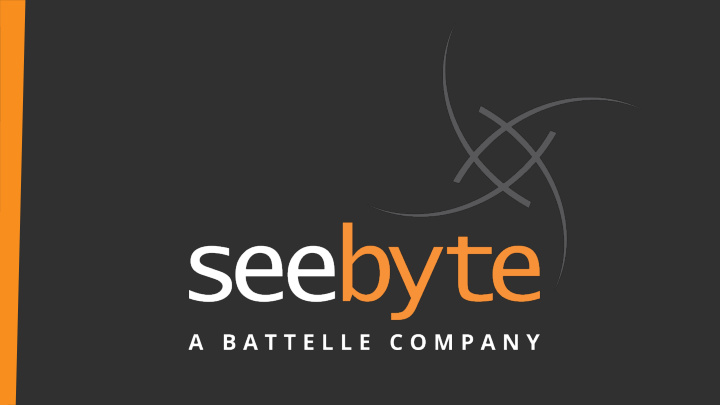



Human-Machine Teaming for Unmanned Maritime Operations Pedro Patron Collaborative Technologies Maritime Autonomy & Technology Showcase 15 th November 2018
“Identify what collaborators know so the effort of your actions can stretch to get things done more effectively together while having the ability to see another’s perspective”* Teaming Trust “The willingness of a party to be vulnerable to the actions of another party based on the expectation that the other will perform a particular action important to the trustor, irrespective of the ability to monitor or control that other party”* *own interpretation from definitions from Harvard Business Review, and Mayer et al., 1995, p. 712
Joint points (the hip) TTCP Dstl UW’16 Boat/USV Pilot AUV Operator Diver ROV Operator (Dashboard) (Tablet) (Handheld) (Console)
Trust by exchanging of mental model ORIGINAL DATA MODEL
Trust by clear communication Starting survey OpArea0. Start the All previous objectives mission! completed. OK. Proceed On my way How long until mission completion? Abort objective. Vehicle SN224 taking over. I am not receiving any updates from side-scan 55 minutes sonar
Trust by transparency
Sharing the mental model 20 bytes / packet Transmission 4096 bytes 200 packets Reconstruction Original (JPG compression) 5 bytes 8192 bytes 10 bytes 20 bytes 1 packet 25 bytes 50 bytes 70 bytes 3 packets 100 bytes 200 bytes (semantic compression) 10 packets
Interacting in natural language (click image for video) Prof. H. Hastie, Dr D. Robb, J. Chiyah
Participating in the mission Compass – heading Map Field of view Location Vehicle information Objectives Vehicle path (click image for video) Vehicle to objective
Summary Current manned – unmanned teaming is limited, reducing operators to ‘autonomy observers’ Control can be replaced by Trust when interactions are transparent at sharing mental model Tasking becomes dynamic and fluid with all teammates participating AR and Natural Language are valid mechanisms for enhancing human-machine interactions
Recommend
More recommend